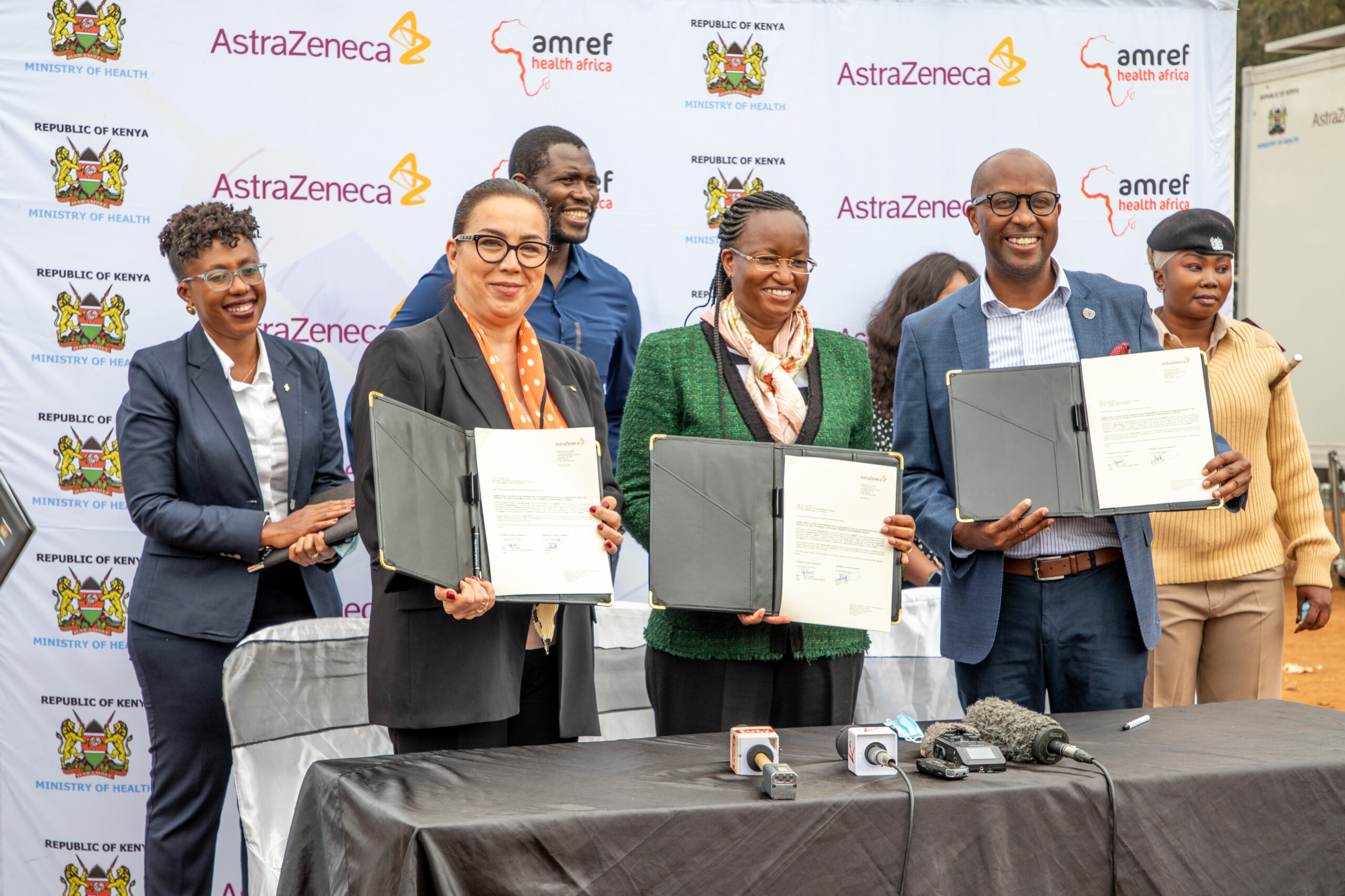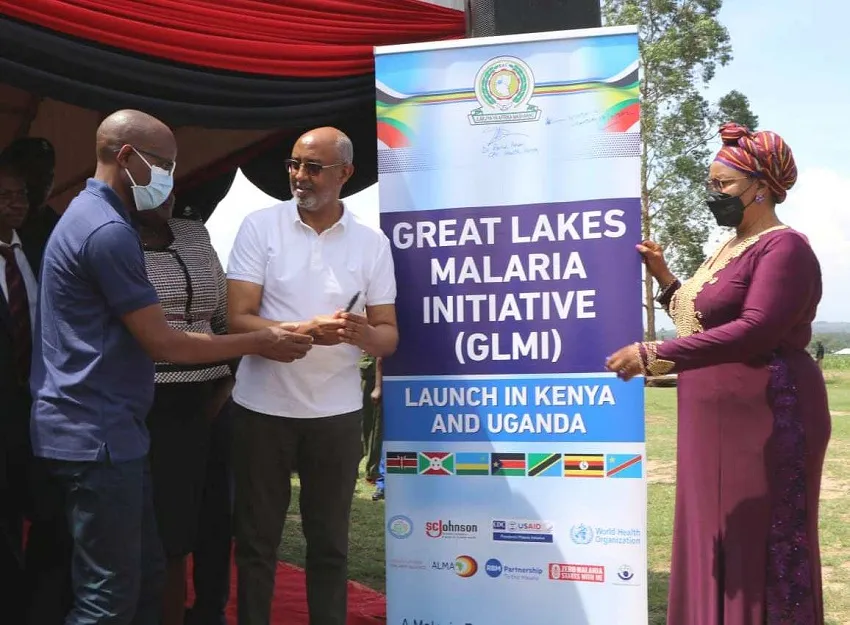Hiring more doctors will not solve Kenya’s health crisis
Tuesday, 14 March, 2017


The fact that Africa has less doctors than the rest of the world has frequently been identified as one of the root causes of the continent’s health challenges.
In Kenya, for instance, the doctor to patient ratio is 1 to 17,000 against the World Health Organisation’s recommended ratio of 1 to 1,000.
However, increasing the number of doctors in service is not the silver bullet to Africa’s health challenges, says Dr Githinji Gitahi, Group CEO of Amref Health Africa.
In an address at the just concluded Africa Health Africa International Conference, Dr Gitahi noted that:
“a survey by a local research firm found out that only 30 per cent of Kenyans knew of the doctors’ strike two months into the strike.”
These findings draw attention to the fact that most health needs are not met by doctors, but by middle-level heath workers and community health workers.
Ironically, investment in middle-level health workers in Africa are sporadic, while investments in community health workers are virtually non-existent. Community health workers are not paid in many African countries, including Kenya, despite calls by the World Health Organisation for a more sustainable community health strategy.


Community Health Workers are the bridge between communities and the health and social service systems.
Africa needs to explore strategies of empowering community health workers, including pushing for legislation to get them paid and integrated into the formal health system.
WATCH VIDEO: Amref Health Africa CHWs Campaign
Besides increasing the number of doctors, drug affordability has also been touted by a section of health experts as a remedy to Africa’s health system challenges.
Affordability is affected by drug and vaccine development, an expensive and uncertain process, typically taking a decade or more and demanding sustained sales to recoup investments. Pharmaceutical companies, therefore, have little incentive to invest in Africa since African countries lack resources to pay for research and treatment. A compelling indicator is health spending as a proportion of GDP, which is 30 per cent lower than the global average.
SOCIAL DETERMINANTS
However, in the past decade, interventions to improve drug affordability have been largely successful. Product development partnerships—where the risk of funding drug development is shared between private sector, public sector and NGOs—have increased availability and affordability of medicine.
Granting of licenses to generic manufacturers has also helped. Tellingly, global consultancy McKinsey says that Africa’s pharmaceutical industry, which was valued at $20.8 billion in 2013, is expected to double in a decade.
But with access to drugs improving, why aren’t health indicators in Africa also improving?
Though it is still necessary to focus on addressing inadequacies in the health workforce and improving drug affordability, these shouldn’t be the key focus areas.
The social determinants of health, it emerged at the just concluded conference, are equally important.
“In fact, the founder of social medicine Thomas McKeown, wrote in 1976 that medicine was not very useful and that the roots of health improvement lay in economic and social progress particularly in better nutrition and living conditions, literacy and access to healthcare workers,” said Dr Gitahi.
The need to focus on social determinants, including poverty eradication, underscores the fact that government economic policy is critical in addressing health challenges.
An example is the slum problem in Nairobi, underscored by the fact that 60 per cent of Nairobi’s 3.5 million citizens live in informal settlements. If the government doesn’t invest in housing and jobs, especially for the youth, this problem will only grow worse. Consequently, health indicators in the city will also get worse, as overpopulation and poor sanitation in informal sectors are directly linked to high incidence of communicable diseases like HIV and tuberculosis.
HIV prevalence in Nairobi slums stands at 12 per cent, compared with five per cent among non-slum urban residents, and six per cent in rural areas, according to the 2008/2009 Kenya Demographic and Health Survey (KHDS).
Focus on the social determinants by, for instance, improving housing, environmental conservation and meaningful jobs will have a stronger impact on health in Africa. This should be the top priority.
Health economics
Sixty per cent of Nairobi’s 3.5 million residents live in informal settlements and, without government investment in jobs and housing, overpopulation and poor sanitation in these settlements will lead to high incidence of communicable diseases such as HIV and tuberculosis.
This article was first published in the Daily Nation on Tuesday, March 14, 2017.
Lennox Yieke is a PR practitioner at Redhouse Public Relations, Kenya.








Comments
[…] as many other agencies focusing on fistula, such as the Fistula Foundation, UNFPA, EngenderHealth, AMREF, Norwegian Red Cross and many others, there are currently 52 FIGO Fellows –trainee fistula […]
[…] tan solo tenía 8 años se negó a que le practicaran la ablación y convenció a su abuelo, un anciano masái, argumentado que esta práctica también implicaba dejar de ir a la escuela. […]
[…] there is a need to provide appropriate training, supervision and remuneration for community health workers to enable them to tackle existing and emerging health challenges, such as non-communicable diseases, […]
[…] of school-going children. Katembu was also leading a delegation to take stock of progress made by Amref Health Africa’s Maternal and Child Nutrition Project, which was launched in May 2016. Katembu noted that the project has helped to improve maternal, […]
[…] Health Africa Group CEO, Dr Githinji Gitahi who is also the current co-chair of UHC2030, noted that “UHC is a human right that ensures the people’s constitutional right is obeyed, […]
[…] to change this are ongoing and a campaign was launched at the Africa Health Agenda International Conference in Nairobi last year that […]
[…] in Kenya. Nice Leng’ete, who escaped the cut when she was 8-years-old, has earned global acclaim, including a feature story in the New York Times, because of her community-led approach to ending […]
[…] ALSO READ: Leap, the mHealth platform and i-PUSH […]
[…] post Second Innovate for Life Fund Accelerator week appeared first on Amref Health […]
[…] post Amref receives Ksh 4.6 billion grant to fight TB and malaria in Kenya appeared first on Amref Health […]
[…] post Christmas in Dagoretti Child Protection and Development Centre appeared first on Amref Health […]